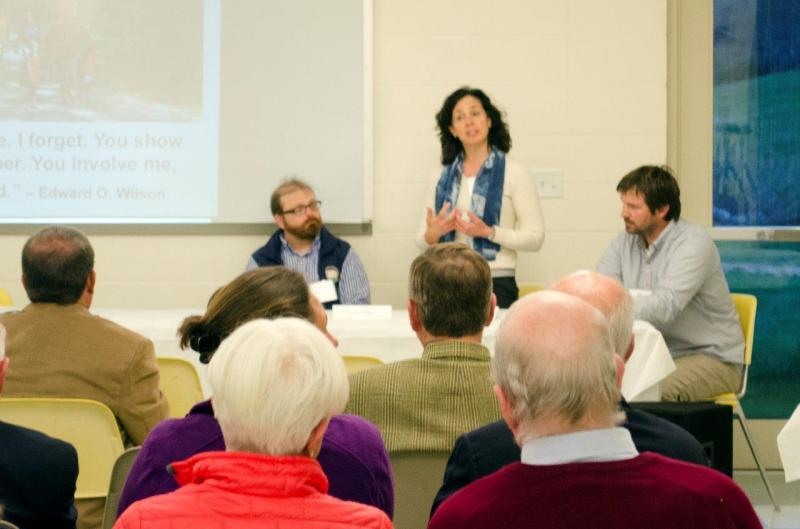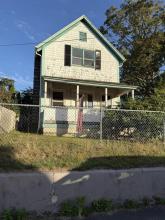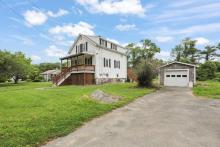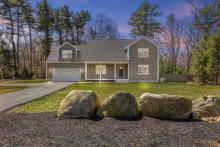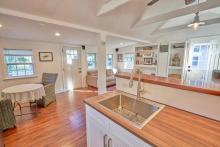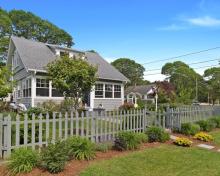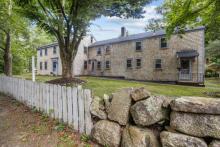Lloyd Center sustainable building on track, panel discusses project
The $3 million Welcome Center at the Lloyd Center for the Environment is on track to be completed in spring of 2017.
A panel discussion and progress report on the Welcome Center -- an entirely sustainable building that creates no waste -- was discussed at the organization's annual meeting on April 28. Half of the $3 million cost of the project has been raised through donations and pledges thus far.
The Welcome Center will not only serve as a drop-off center and gathering space with restrooms, but the building itself will become a learning tool. With solar panels, a Tesla wall (a battery that charges using electricity generated from solar panels) and a water collection system, the building will serve as a physical reflection of sustainability. Additionally, the Welcome Center meets the International Passive House standards which ensure that the building uses energy as efficiently as possible.
Architect Kathryn Duff initially presented the Lloyd Center with the Living Building Challenge (LBC) sustainability certification program in 2014. The Lloyd Center announced its "Transforming a Legacy" campaign to fund the project in May 2015. After the previous two design proposals didn’t meet LBC standards, the third and current plan passed.
“The Living Building Challenge is the perfect way for us to show the community that we want to be leaders,” said Jenny Hunt, a Harvard University Master’s candidate who has been donating her time to the Center for the last four years.
Duff is now the lead architect on the project. Integrated Ecostrategy was consulted to set sustainability goals and evaluate each and every material used in the construction of the Welcome Center.
“A tube of caulk gets vetted on these categories,” Duff said.
According to Building Committee member Jeremy Dagould, there is a divide between consuming energy and seeing the damage it causes. Additionally, construction waste takes up a substantial portion of landfills.
“Building it right and building it well will make sure it’s here in 50 years, in 100 years,” Dagould said.
The Greater New Bedford Regional Vocational-Technical High School partnered with the Lloyd Center to construct the building, making it the first LBC-approved building to be built by students.
LBC requires seven “petals” to be reached in order to be certified: place, water, energy, health and happiness, materials, equity, and beauty. These petals ensure that the building is strategically located, uses, cleans, and conserves water, uses energy efficiently, is accessible, and contributes to the natural beauty around it.
“We’re in the new era of building,” said Janet Milkman, the Executive Director of the Marion Institute.
Also at the annual meeting, the Lloyd Center awarded the George G. Haydock Award to Sandra Hall. The award is given to someone who has made an outstanding contribution to protecting the local environment.
Hall, a professional artist, donated her time and talent to the Lloyd Center in creating its signature clambake art for many years. Additionally, she contributes original artwork every year to its silent auction.



